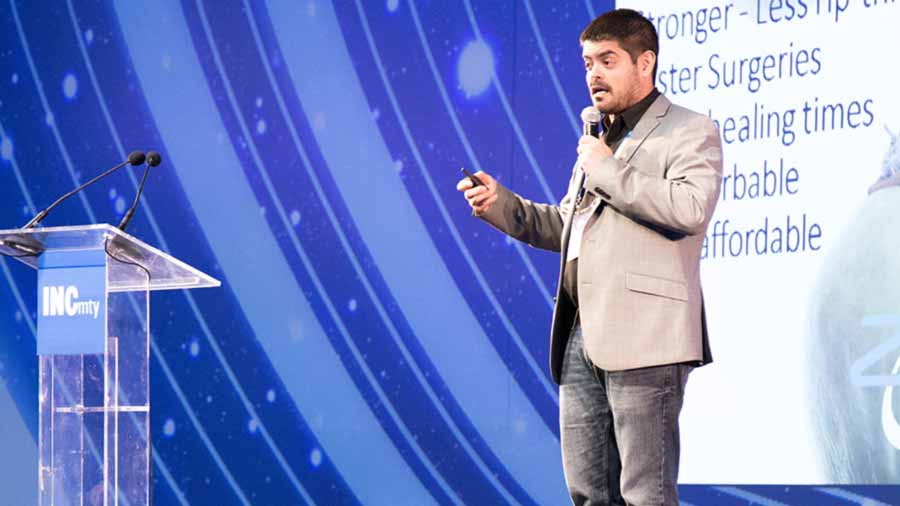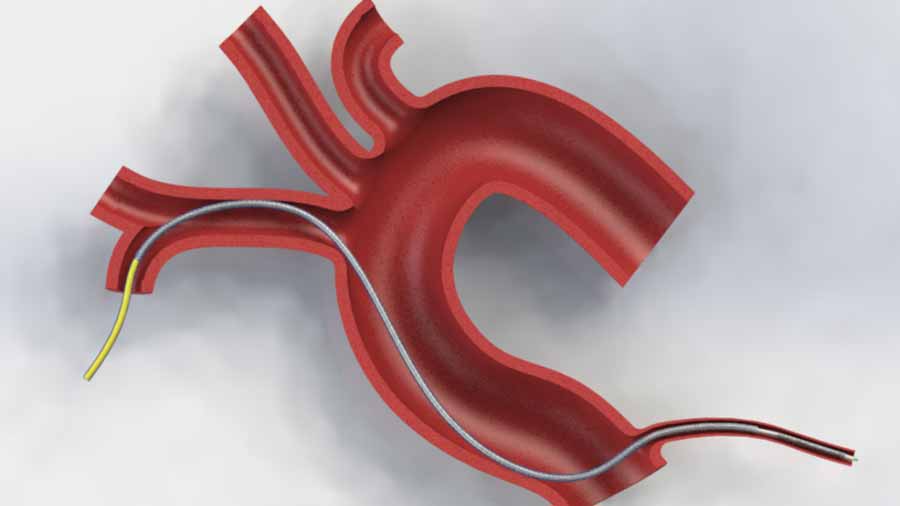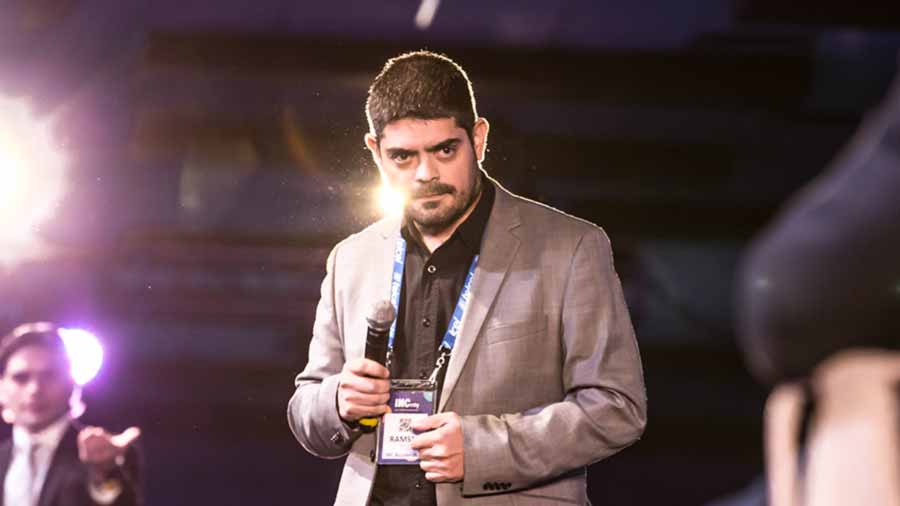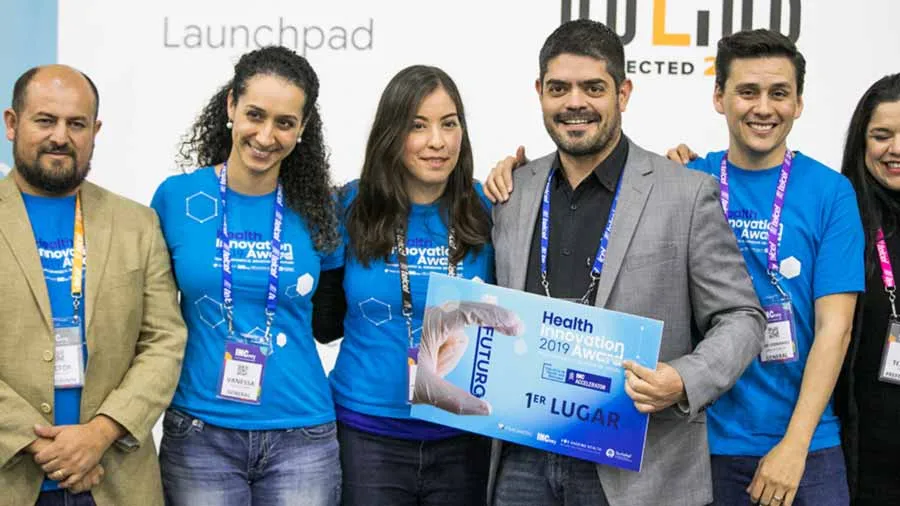Dr. Ramsés Galaz, an engineer and Tec de Monterrey professor at the North Sonora campus, will be working on creating a catheter for heart surgery, which could help in complex procedures and save lives.
The 18th meeting of the Mexico-Quebec Working Group selected this innovative project for funding from Quebec’s Ministry of International Relations and La Francophonie (MRIF).
This project seeks to enhance the catheters that are inserted into arteries to unblock them when they’re clogged and prevent heart attacks, tissue damage, or death.
“In some cases, you can’t even get through. Sometimes, patients can’t be treated and there’s no blood flow. The project we’re going to develop is a reinforced catheter that allows us to get through difficult and complex lesions,” says Galaz.
Ramsés is the founder of GSE Biomedical, a company that develops medical technologies and devices. He also works at Nanostent in Quebec, so both companies will be working on the catheter for cardiovascular surgery.

Here’s how the catheter would work
Ramsés explains that catheters currently tend to be thinner, to facilitate maneuvering inside arteries, which also makes them less rigid.
“When there’s a coronary artery lesion (...) thrombosis occurs, which causes the artery to become clogged and prevents blood from reaching the heart tissue. It’s the precursor to a heart attack,” says Ramsés.
Occasionally, he explains, there are very severe or calcified lesions that close off the artery. Sometimes, there’s only a small gap that’s very difficult to get through. When you add the use of ever thinner catheters, it makes the procedure more complex for cardiologists.
“When (...) thrombosis occurs, it causes the artery to become clogged and prevents blood from reaching the heart tissue. It’s the precursor to a heart attack.”
The lack of rigidity in catheters is the area of opportunity that Ramsés will look to innovate on with his company GSE Biomedical and the Nanostent company in Quebec.
“We aren’t reinventing the wheel. The procedures remain the same; insert the catheter, go into the artery, then go through the lesion with a thin wire, and then apply pressure on the constriction in the artery.
“We need to make adjustments to the structure and materials to reinforce that area and be able to go through the lesion. Once this happens, the normal procedure can be followed,” Ramsés says.
What’s more, he added that they will seek to make this reinforcement compatible with any catheter, making it more accessible.

This is how the partnership between Mexico and Quebec was formed
Ramsés completed his graduate education in Canada, where he studied for a master’s degree in Mechanical Engineering and a PhD in Biomedical Engineering, after graduating from Tec de Monterrey with a degree in Mechanical Engineering and Administration.
Upon finishing his PhD, he returned to Mexico, where he started his company GSE Biomedical, which develops medical devices.
“We have a lot of projects. I started my business and maintained my relationship with Quebec,” Galaz said.
In 2018, when he was already developing stent technology (tiny tubes placed into a hollow structure inside the body such as arteries or veins), Ramsés was invited to work at Nanostent, a Quebec-based company.
Together with Nanostent and GSE Biomedical, Ramsés participated in a call from the Directorate General of Project Operations in Mexico at the Mexican Agency for International Development Cooperation (AMEXCID).
This call includes 9 innovation and research projects, with Ramsés being selected along with businessman Olivier Bertrand from Les Entreprises Nanostent in Quebec.
The projects selected in this call will obtain funding of up to 8,000 Canadian dollars during the first year of work, with the possibility of obtaining an additional 8,000 when evaluated during the second year.
“The advantage we have with Nanostent is that Dr. Bertrand has a lot of contacts across the world.
“So, the devices we develop are going to be presented in Europe, America, and Asia. He’s someone who is going to give us visibility,” said Ramsés.
“The devices we develop are going to be presented in Europe, America, and Asia.”

Seeking advances in medicine through engineering
During his career, Ramsés has worked on the development of various medical devices such as ZipTek, a surgical button that replaces the traditional suture method in surgeries, for which he was given the INCmty Health Innovation Award.
Similarly, he worked with his company GSE Biomedical on the creation of an emergency ventilator for providing artificial respiration to COVID patients, in conjunction with FEMSA, Metalsa, Coppel, and Tec de Monterrey.
“I also have the idea of setting up a research center, perhaps on a Tec campus.
“I don’t want to say either that I only want to devote myself to the cardiovascular area. We also have projects in gynecology, blood tests, and orthopedic surgery,” says Ramsés.
He’s worked at Tec de Monterrey for 14 years as a professor of Biomedical Engineering on various campuses such as North Sonora and Mexico City.
“I tell my students to devote themselves to something they’re studying. I tell them how this world of medical devices works, and some have gone on to this area. We’ve even sent students abroad for graduate studies.
“When we talk about leaving a legacy, there have been thousands of surgeries with devices such as Ziptek or the ventilator. The teaching part is a legacy, the business part is another, but it’s also the power to change and save people’s lives,” concludes Ramsés.

READ MORE:





